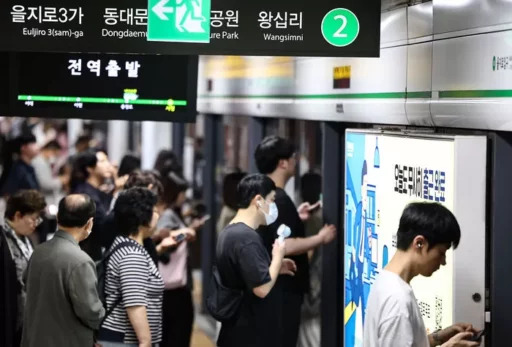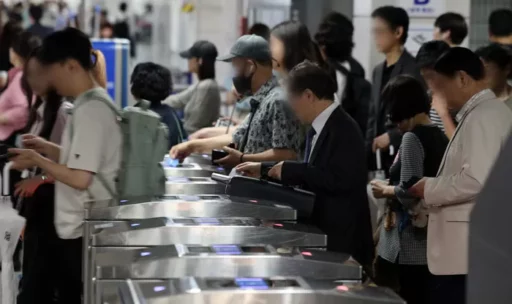Seoul Subway Stations Have No Cooling Facilities in 18.5% of Cases Amid Heat Wave
As a record-breaking heat wave continues for the first time in 117 years, many subway stations in Seoul operate without any cooling facilities, causing significant discomfort for citizens.
In particular, many underground stations, where proper ventilation is not achieved, lack any cooling equipment, posing a health risk to vulnerable groups during the heat wave and to subway workers.
On the 12th, The Fact revealed that according to the "Subway Cooling Status" report submitted by the Seoul Metropolitan Council’s Citizen Rights Commission Chair Kim Ji-hyang (People Power Party) to Seoul Transportation Corporation, out of a total of 276 subway stations in Seoul, 51 stations (18.5%) have no cooling facilities at all.
What’s more serious is that 26 of these are underground stations, which have no additional cooling equipment, leaving them completely defenseless against the heat wave.

Reports of Cooling Issues in Subways Rise 65% in Two Years… Citizens' Complaints Intensify
Looking at the data from Seoul Transportation Corporation, complaints related to cooling are expected to soar from approximately 181,000 cases in 2022 to nearly 300,000 by 2024.
Just this summer (from June 1 to July 8), around 144,000 complaints were recorded, reflecting a 3% increase compared to the same period last year. This clearly illustrates the ongoing problem of inadequate cooling facilities in the subway.
As the heat wave intensifies, the perceived temperature in underground stations is also rising. In some cases, the temperature inside the station is over 5 to 8 degrees higher compared to the air-conditioned train, leading many passengers to complain of severe discomfort upon exiting the train.

Budget Shortages Snagging Efforts… Over 50 Billion KRW Needed per Station
Seoul Transportation Corporation acknowledges these issues but is struggling to devise practical measures due to budget constraints. Installing new cooling equipment requires remodeling the stations, with the minimum costs reported to exceed 50 billion KRW per station.
In fact, last year, there was an attempt to proceed with station remodeling and cooling facility installation at Ahyeon Station, but the project was ultimately canceled due to budget burdens reaching around 60 billion KRW.
Without proactive budget allocation at the city level, it is unlikely that residents' difficulties will be resolved.
The city of Seoul holds 103.9 billion KRW in general contingency funds and 20 billion KRW in disaster purpose contingency funds in this year’s first supplementary budget, indicating potential funding availability. However, there are concerns that it may take time for these budgets to be reflected in actual projects.
As a short-term response, Seoul Transportation Corporation plans to pilot the installation of 60 cooling auxiliary devices in 15 above-ground stations between August and September. However, it has been pointed out that this plan may not even be operational in the currently extreme July heat, limiting any real improvement in comfort during the summer months.
Image source: News1


